Someone posted this photo recently. I can’t find a definitive original source, but multiple social media posts (Reddit, Twitter, Instagram), with different photos of the same object, all identify it as a 4,000-year-old wagon found in Lchashen, Armenia:

A few interesting things to note about the wheels:
First, contrary to popular belief, wooden wheels like this were generally not made from cross-sections of logs. Look at the grain: they were assembled from planks.
In The Wheel: Inventions and Reinventions, Richard Bulliet writes:
When three planks were used, they were fastened together by mortise and tenon—that is, tab A in slot B—and glue, and sometimes were reinforced by thin strips of wood going crosswise instead of radially.
(A Twitter commenter suggests that “Tree rounds unavoidably split radially when seasoning.”)
Second, look at how the hub is wider than the rest of the wheel. Why make it that way? Given the material (wood) and the level of precision attainable at the time in manufacturing, if the hub were narrower, the wheel would wobble too much on the axle:
If the round hole that the axle goes through in the center of the wheel is roomy enough for the wheel to turn without much friction, however, a narrow wheel will inevitably tilt to the side a bit and wobble when it rolls, eventually wearing through the axle.
Of course, you could just make the entire wheel that thickness, but then it would be too heavy. So: thin wheel with a thick hub.
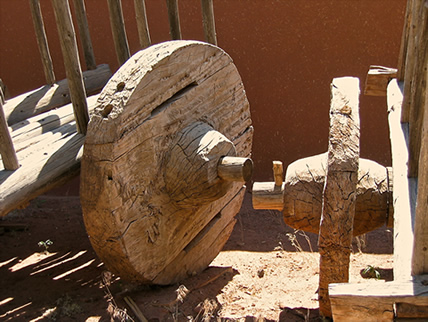
Here’s an even older wheel. Notice anything different?
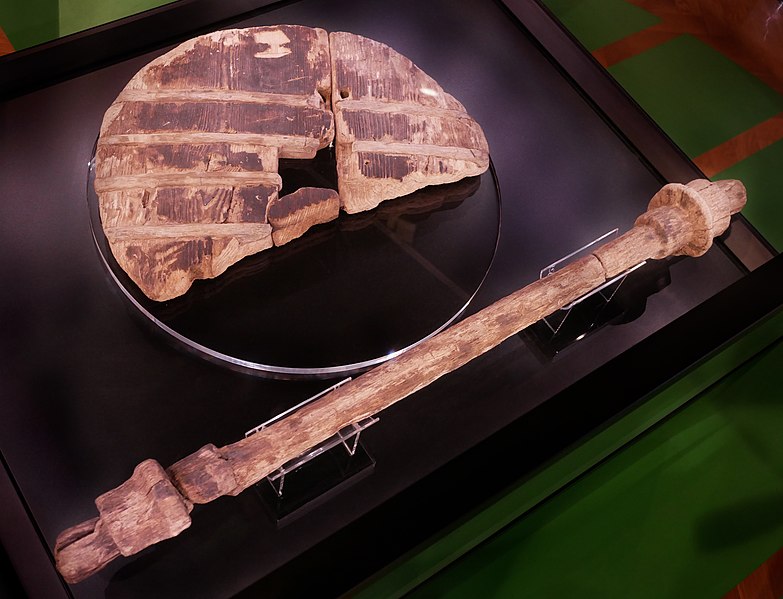
Look closely at the hub and the axle.
The hub is square. That’s because this wheel does not rotate on its axle: the axle and both wheels attached to it all rotate together, as a unit. This design is known as a “wheelset.”
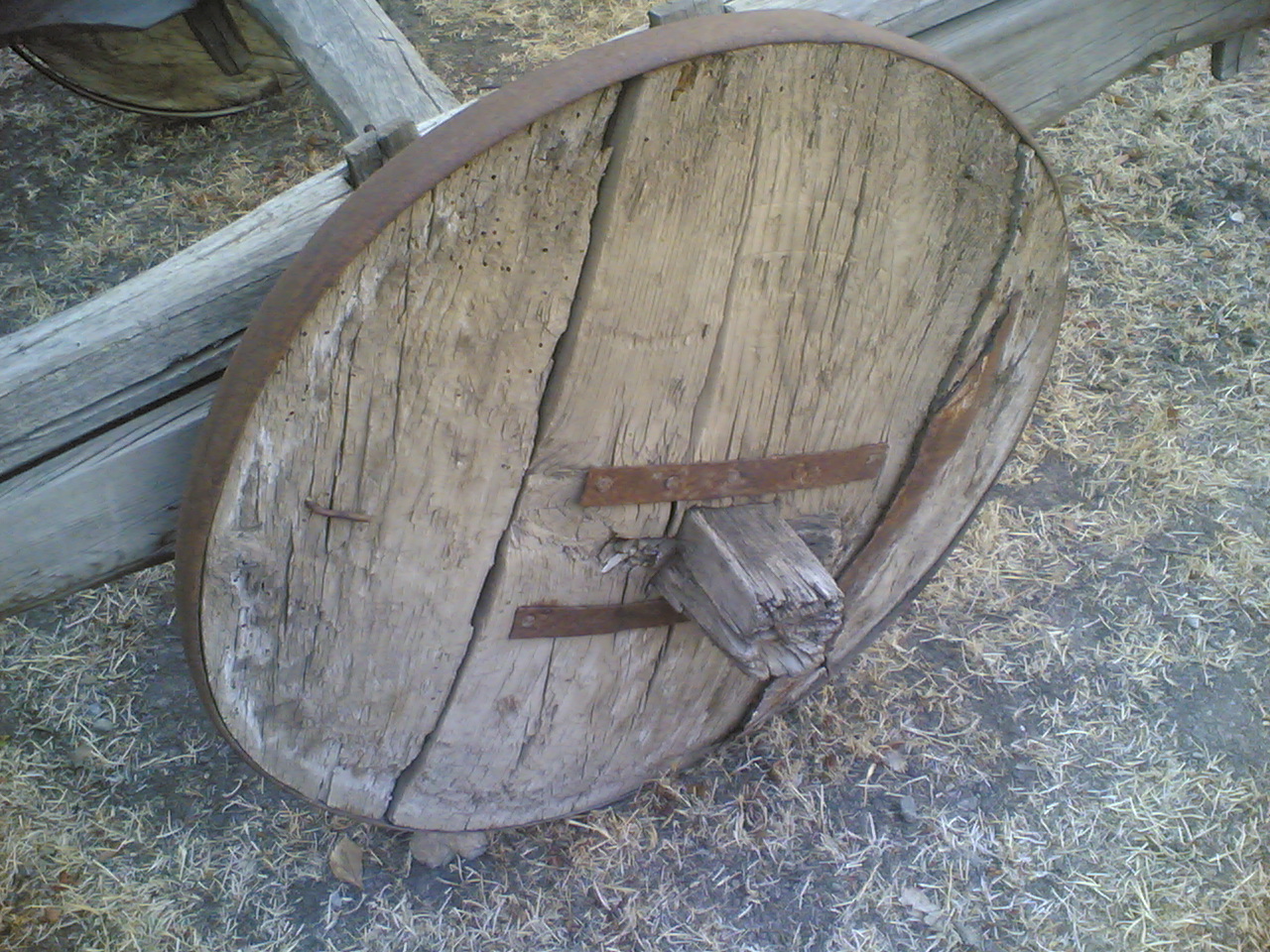
A wheelset is easier to construct. The drawback is that it is harder to steer: On a turn, the outer wheel needs to rotate faster than the inner one. When they are both fixed to the same axle, this can’t happen, so at least one of the wheels drags on the ground. Wheelsets may have initially been used for mine carts that mostly followed short, straight tracks.
Independently rotating wheels are better for, say, an oxcart, which needs to turn in fields and on roads:
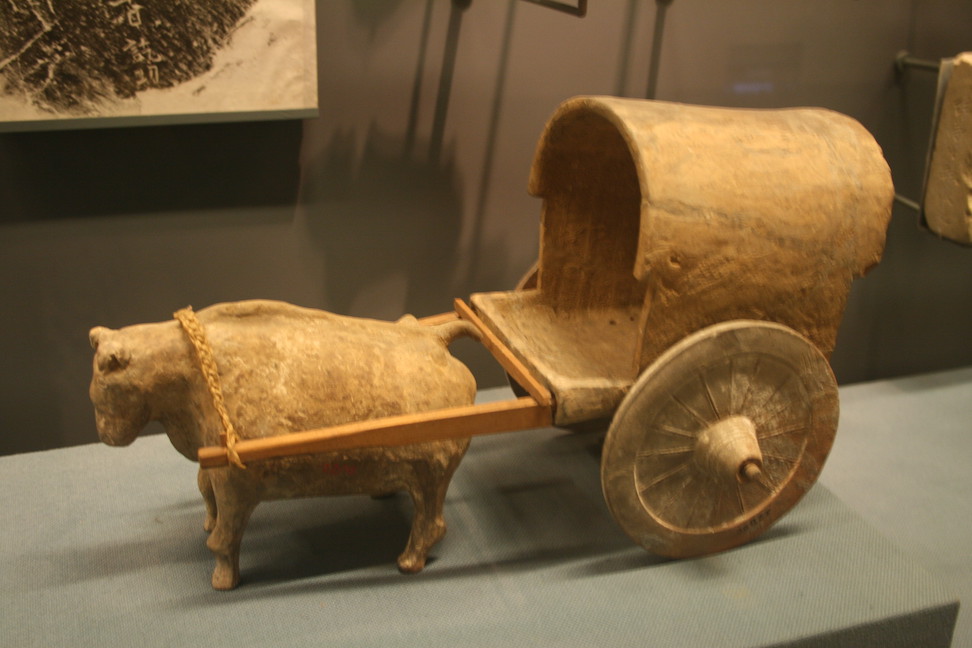
A wagon, which has four wheels (vs. two for a cart), has another steering problem: the wheels should ideally be angled on turns. This is typically achieved with a front axle that rotates:

Thousands of years later, when we get to the automobile, we have a new problem.
Carts and wagons steer via the animal in front: when the animal turns, it pulls the vehicle behind. With cars, for the first time, the steering needs to be initiated from inside the vehicle itself.
The first prototype automobiles dealt with this by only having three wheels:
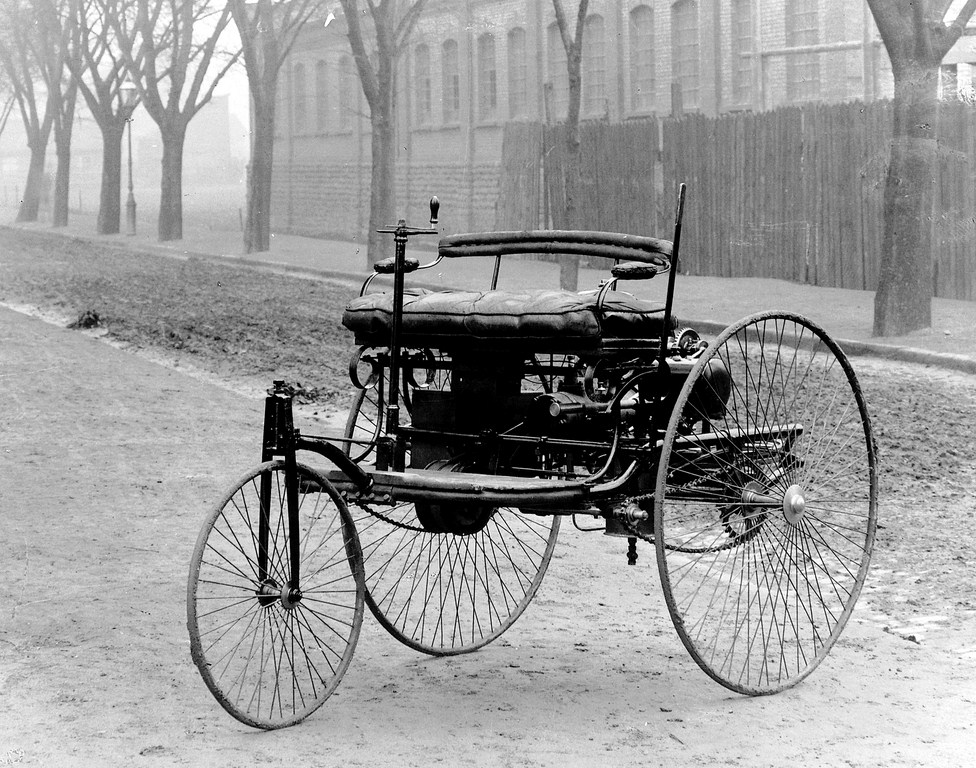
They were driven by the two wheels in the back; the lone front wheel was used for steering, like a bicycle.
With a four-wheeled car, getting steering right is tricky. Ideally, you want the front wheels to angle, but at different angles, so that the axle lines of all four wheels converge at a single point, which is the center of the turning circle:

This is achieved through a brilliant linkage mechanism known as Ackerman steering (although it was actually invented by Georg Lankensberger):
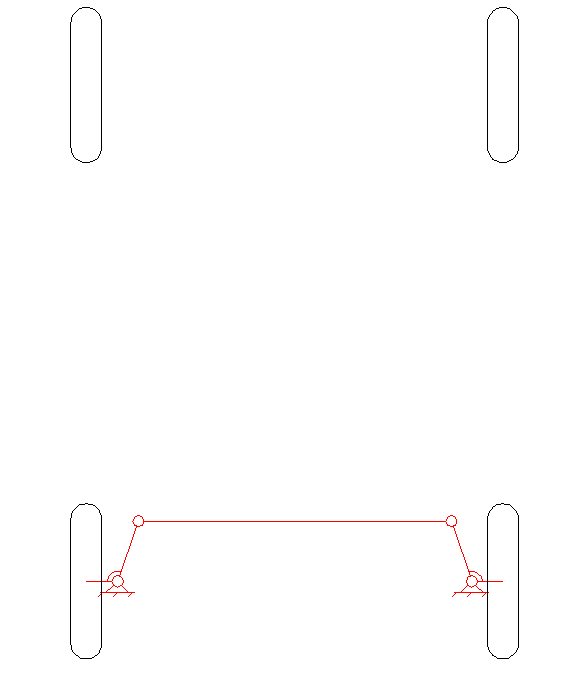
So, the wheel has been reinvented multiple times—and that’s a good thing.
Source for most of this is The Wheel: Inventions and Reinventions, by Richard Bulliet.
Originally a Twitter thread.
